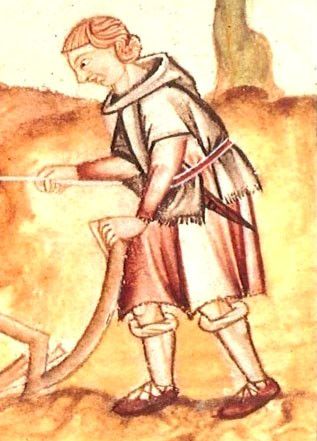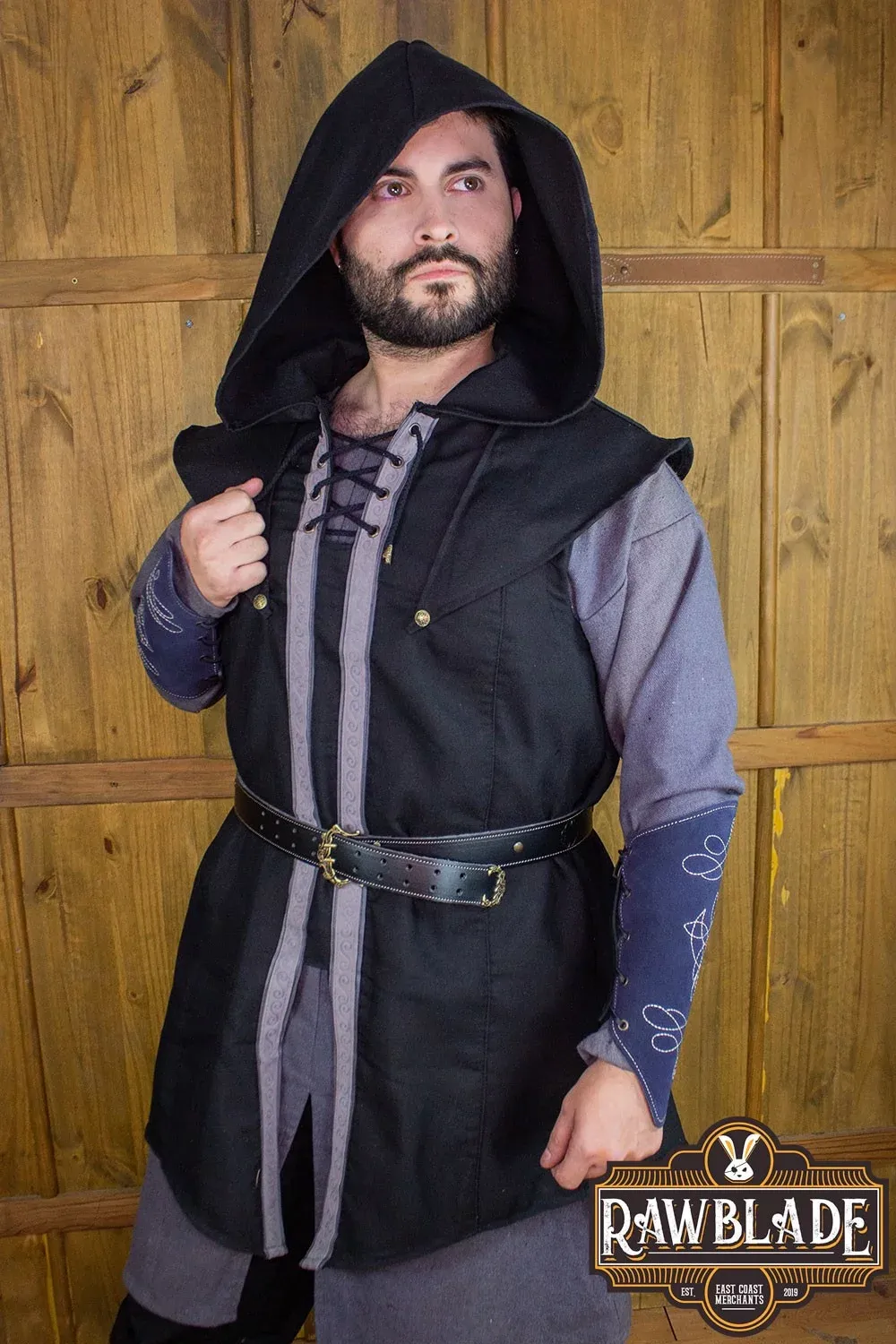What is a Balandre?
The balandre is a medieval garment that played a crucial role in the clothing of the humble classes during the 13th, 14th, and 15th centuries. This garment served as protection against inclement weather, being an indispensable item in the wardrobe of field workers.

Description of the Balandre
The balandre is characterized by its simple yet functional design. It was a rectangular cloak with a hole in the center for the head. This design allowed users to easily put on the garment and keep their heads covered without obstructing their vision or breathing. Additionally, a hood was added to its structure to improve protection against cold and rain.
Categories of Balandres
- Balandre: If the sides of the cloak were sewn.
- Perpunte: If the sides were corded.
- Gonela: If there were no seams on the sides, allowing greater freedom of movement.
Usage and Historical Context
The balandre was especially popular among the lower classes, such as field workers. It was not common in the fashion of higher classes, such as nobility. The simplicity and utility of the garment made it very effective for being worn over other clothing, providing an additional layer of warmth and protection without interfering with daily tasks.
Functionality
The balandre had the advantage of being a loose-fitting and comfortable outer garment. Its design allowed for freedom of movement, something essential for those engaged in physical activities in the fields. It was an ally against cold and humidity, common characteristics of the climate in many European regions during that period.

Evolution of the Balandre
Over the centuries, the balandre underwent variations in its design. Early versions may or may not have seams, but over time, some balandres began to incorporate seams for better support and durability. This change facilitated use and reduced the need to fasten the garment with cords.
Images and Representations
The balandre appears in various artistic representations, especially in the marginalia of medieval manuscripts. A notable example is the Luttrell Psalter from the 14th century, where field workers are depicted wearing this garment. These images not only reflect the practical use of the balandre but also offer us valuable insights into daily life in the Middle Ages.
Medieval Clothing
The balandre was part of the ensemble of medieval clothing for both men and women of humble condition. It was a versatile garment, suitable for different seasons of the year, notable for its ease of use and effectiveness in keeping warm and protecting against rain.
| Type of Balandre | Distinctive Features | Main Use |
|---|---|---|
| Balandre | Sewn sides | Weather protection, free movement |
| Perpunte | Corded sides | Flexible and adjustable |
| Gonela | No side seams | Greater freedom of movement |
The balandre, in all its variations, is an excellent example of how functional garments adapted to the specific needs of people could make a difference in daily life during the Middle Ages.
















